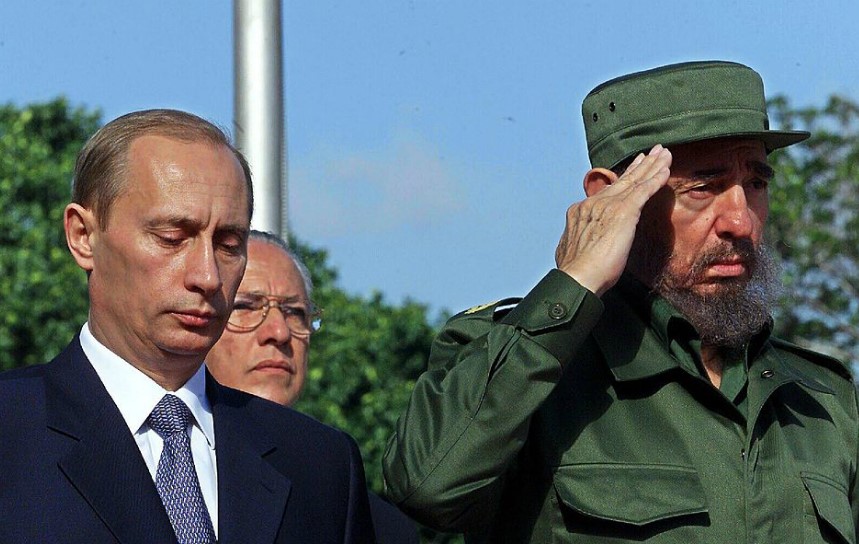Adalberto Roque/AFP
By
Ricardo Swire
“Socialism or Death” was his famous rallying cry. First issued in an era when Western designed democracy swept the globe, Communist regimes in China and Vietnam embraced capitalism, leaving Cuba an economically crippled Marxist curiosity. The legendary Fidel Castro overcame imprisonment at the hands of Dictator Fulgencio Batista and was exiled to Mexico.
Still the Cuban revolutionary was able to lead a rebel army to improbable victory. In January 1959 Fidel Castro triumphantly rode in to Havana. At thirty-two years of age he became Latin America’s youngest leader. The Caribbean island’s Marxist head of state, who embraced Soviet style communism and defied the power of ten American presidents, during his half century reign, is now another iconic figure in official journals of world history.
In April 2016 the former President told Cuba’s Communist Party congress; “Soon I’ll be like all the others. The time will come for all of us, but the ideas of the Cuban Communists will remain as proof that on this planet, if one works with fervor and dignity, they can produce the material and cultural goods that human beings need and that need to be fought for without ever giving up.” Seven months later, on Friday November 25th 2016, the controversial former President was dead at the age of ninety.
Not long ago American and Cuban governments publicly quarreled about a US imposed economic embargo. Behind the political stage Cuban/American law enforcement officials continued to cooperate on drug enforcement issues, data exchanged on suspected drug boats’ movement through the Caribbean. On December 17th 2014 America’s President took unprecedented action. He cut the anchor attached to failed America/Cuba policies. A new course plotted towards courteous diplomatic relations. On March 16th 2016 direct airmail flights, between America and Cuba recommenced for the first time in fifty years. The inaugural flight specially delivered one responding letter to a seventy-six year old Cuban letter writer.
On May 29th 2015 the US Secretary of State rescinded Cuba’s “State Sponsor of Terrorism List” designation. Internationally Cuba profiles as a distinguished Caribbean island. America’s revamped diplomatic policy has an estimated three-year window before Cuba’s major political transition is fully realized. US Homeland Security (HS) decision makers regard the entire Caribbean geography as America’s “Third Border” after Mexico and Canada. With the region’s closest point ninety miles south of Florida’s coastline, the Caribbean is vital to successful US counter-narcotics, trafficking, boundary and airport security operations.
Third Border designation gives regional trade and immigration policies, together with environmental safety, a place in America’s security calculations. A recent private assessment determined the US Coast Guard (USCG) will need more intelligence and detection technology to cope with increased Cuban maritime migration. America’s Transportation Security Administration (TSA) will be obliged to further harmonize its electronic and human screening processes.
US travelers to Cuba are now allowed to import US$400 worth of items from Havana, an allowance of tobacco and alcohol products, with a combined worth of no more than US$100 is provided. Airport internal security profilers will have to monitor additional human traffic. In 2015 US/Cuba chartered flights totaled 4,783. At the end of 2016’s first six months 3,452 similar flights were recorded. One incident compromised security and safety.
In July 2016 the Institute of Civil Aeronautics of Cuba (IACC) and America’s TSA established a unit of “Safety Agents” assigned to charter flights. Drug-sniffing K9 teams are standard feature at Cuba’s international airports baggage claim areas. On December 1st 2015 America and Cuba convened their second counter-drugs meeting. Increased trafficking interdiction cooperation and data exchange were agenda topics.
In 2013 Cuba’s government notified the USCG twenty-seven times in “real time,” about the presence of suspicious maritime vessels. America has an “Interests Section” based in Havana, with one USCG attaché who serves as “Drug Interdiction Specialist.” Behavior trends show Cuba’s National Revolutionary Police Force officers are inhospitable to drug traffickers and dealers. Constant presence of uniformed and undercover state security officers, coupled with the law courts’ strict punishment for drug crimes, contrast from Cuba’s pre-revolution heyday.
Before the late Fidel Castro ascended to power Havana’s nightclubs and casinos offered a full range of illegal drugs. Opium lairs were permanent fixtures in the Capital’s Chinatown. History recalls Fidel Castro shutting down casinos, imposing harsh drug laws and sending addicts to Marxist reeducation camps for hard labor. Today Cuba’s Intelligence Directorate (DGI) operates an extensive surveillance system.
Russia’s largest overseas Signals Intelligence (SIGINT) facility is situated at Lourdes, thirty miles from Havana. The high-tech base provides technological advantages to Cuba’s internal security units. Russia’s Caribbean based tracking dishes and satellite system are used to intercept phone calls, faxes and computer communications. Previously Russia’s KGB, now the Federal Security Service (FSS), worked jointly with Cuba’s DGI to assist one American Central Intelligence Agency (CIA) defector publish the “Covert Action Information Bulletin.”
Cuban citizens’ general cognizance, of such national directorate capabilities, categorize domestic drug dealing as extremely risky. Although US DEA information recorded the existence of offshore Cuban-American crime syndicates. Groups based in Miami that manage marijuana grow houses in Gainesville, Jacksonville, Georgia and the Carolinas. One grow house generates more than US$300,000 annually.
Such Cuban-American crime syndicate’s traffickers will attempt to exploit Cuban waters and airspace for deeper reach in the Caribbean Basin. Evidence suggest clandestine watercraft skirt Cuba’s territorial waters, dodging the patrolling Cuban and American Coast Guard ships. Concerns first echoed three years ago by USCG, Customs & Border Protection (CBP) and US Southern Command (SOUTHCOM) officials.



Thanks for a good informative piece of writing.